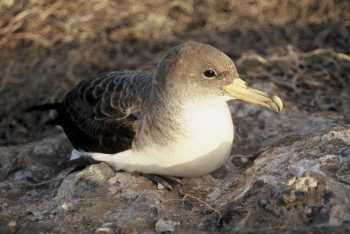Jacopo Cecere (LIPU-BirdLife Italy, Parma, Italy) and colleagues, publishing in the Italian Journal of Zoology, discuss at-sea movements and habitat use of Scopoli's Shearwaters Calonectris diomedea from two Italian islands in the Mediterranean.
The paper's abstract follows:
"We analysed the patterns of movement and habitat use of Cory's shearwaters (Calonectris diomedea diomedea) from two colonies in the central Mediterranean Sea: the island of Linosa and the Tremiti Archipelago. The colony of Linosa is placed in a rather pelagic environment, being about 160 km distant from the coasts of both Sicily and Tunisia, while the colony of Tremiti is rather near to the coast of the Adriatic Sea, being only 25 km from the Italian coast. Field work during incubation was carried out at both colonies and throughout chick-rearing only at Linosa. We aimed to test first whether birds from the two colonies differ significantly in habitat use, and secondly whether constraints during incubation and chick-rearing lead birds to explore different habitats. Trip duration was correlated with the farthest distance covered in both colonies and, for Linosa birds, it decreased at the start of chick-rearing but increased later. During incubation the expanse of explored areas did not differ between the colonies, but for Tremiti these were generally characterized by higher average primary production and shallower waters than those for Linosa. Furthermore, during the incubation period Linosa birds explored areas with higher values of primary production and shallower waters than during chick-rearing. Chick-rearing is therefore likely to constrain birds to use sub-optimal areas closer to their colony due to the intense pressures of chick provisioning. Our data indicate that conservation efforts should therefore aim not only to protect the best foraging areas but also to conserve areas closer to the colonies, which will be profitable enough to provide adult birds with sufficient food for chick-rearing."

Cory's Shearwater Calonectris borealis. Photograph by Paulo Catry
Reference:
Cecere, J.G., Catoni, C., Maggini, I., Imperio, S. & Gaibani, G. 2012. Movement patterns and habitat use during incubation and chick-rearing of Cory's shearwaters (Calonectris diomedea diomedea) (Aves: Vertebrata) from Central Mediterranean: influence of seascape and breeding stage. Italian Journal of Zoology DOI: 10.1080/11250003.2012.710654.
John Cooper, ACAP Information Officer, 26 November 2012

 English
English  Français
Français  Español
Español